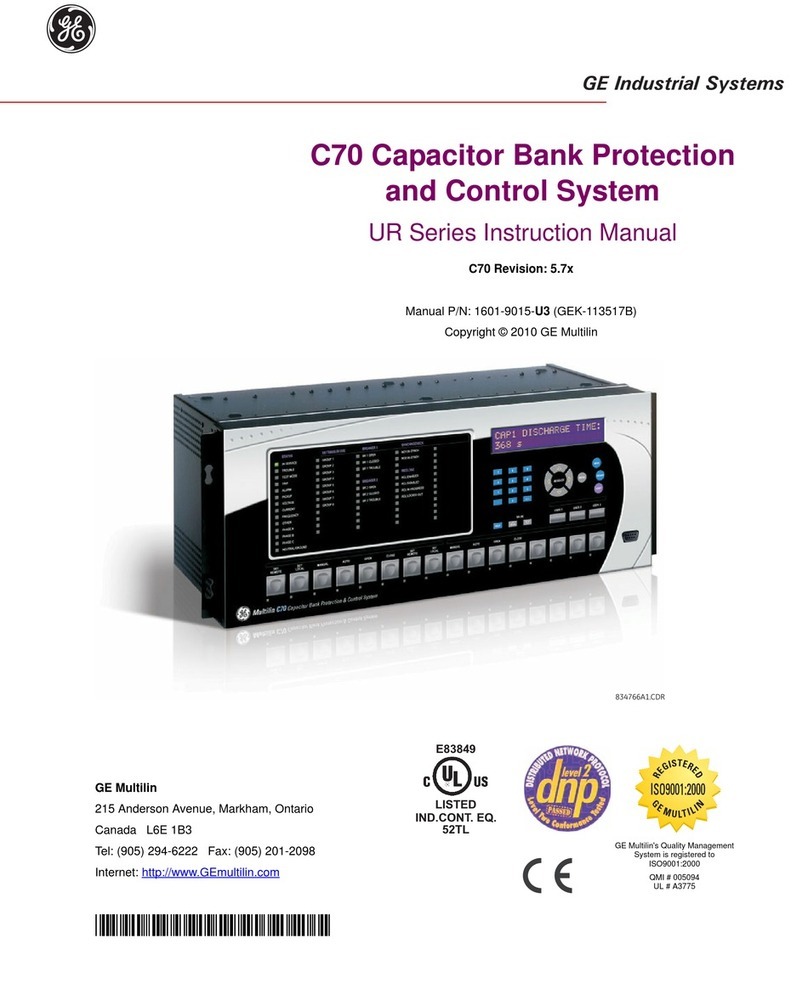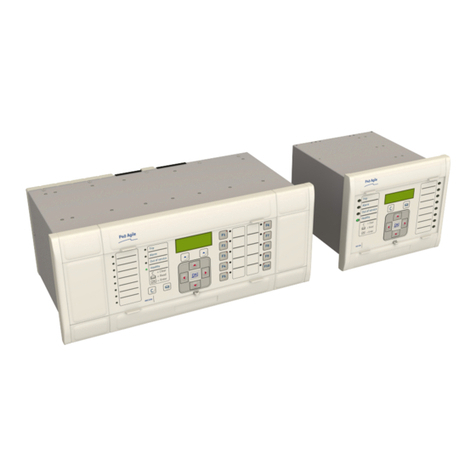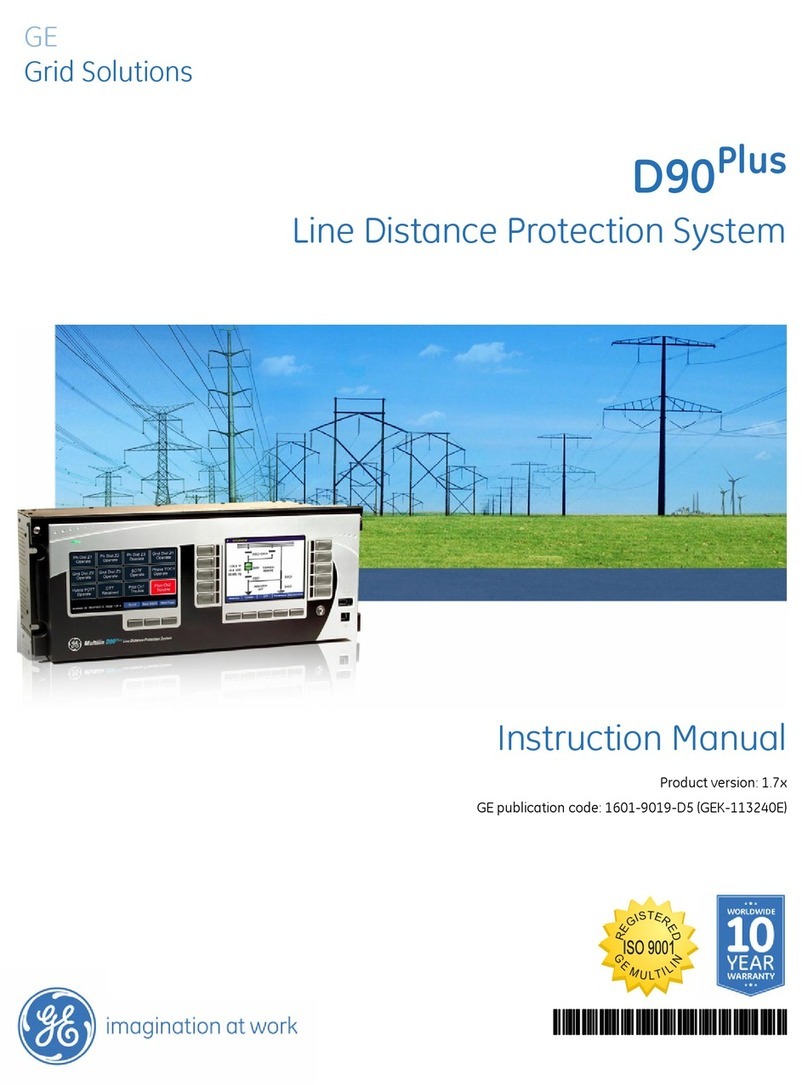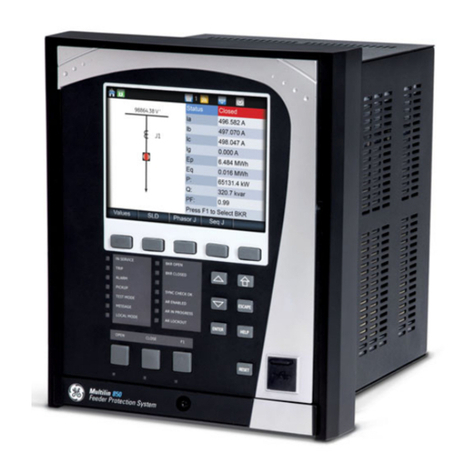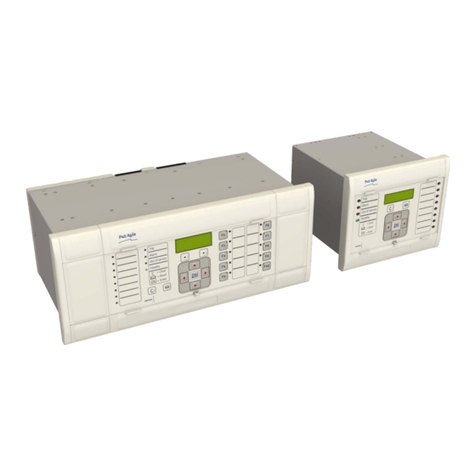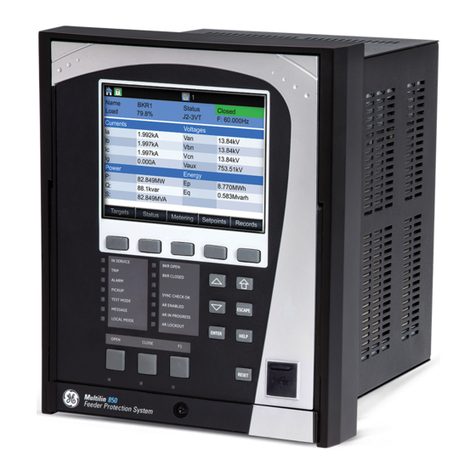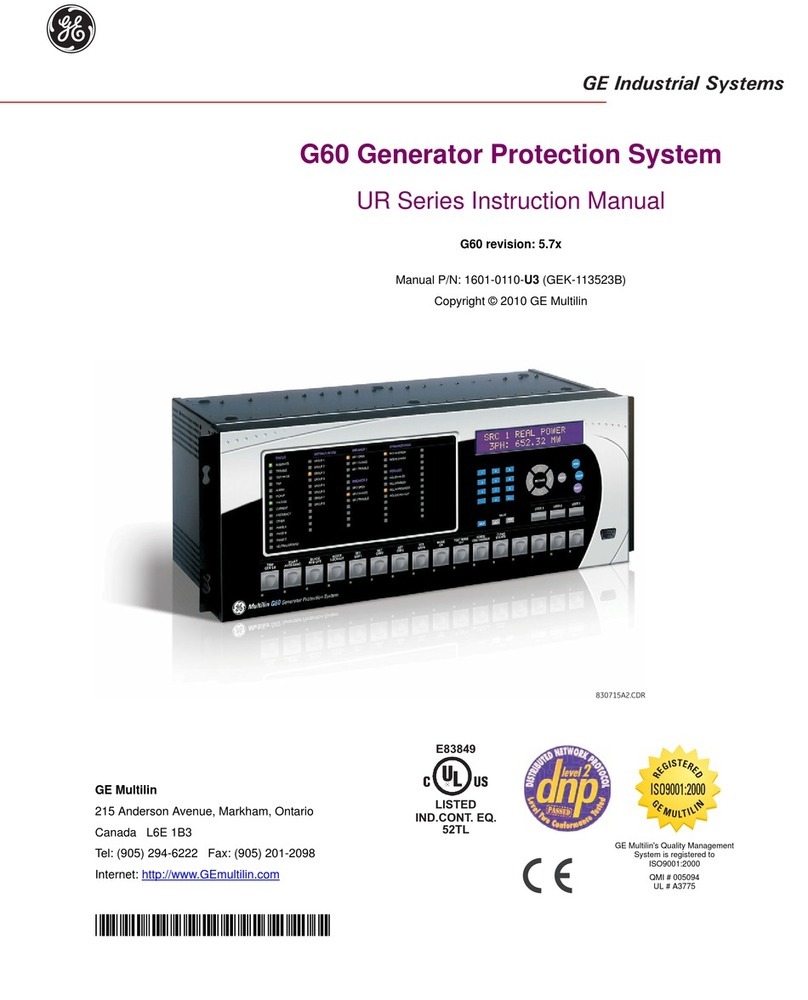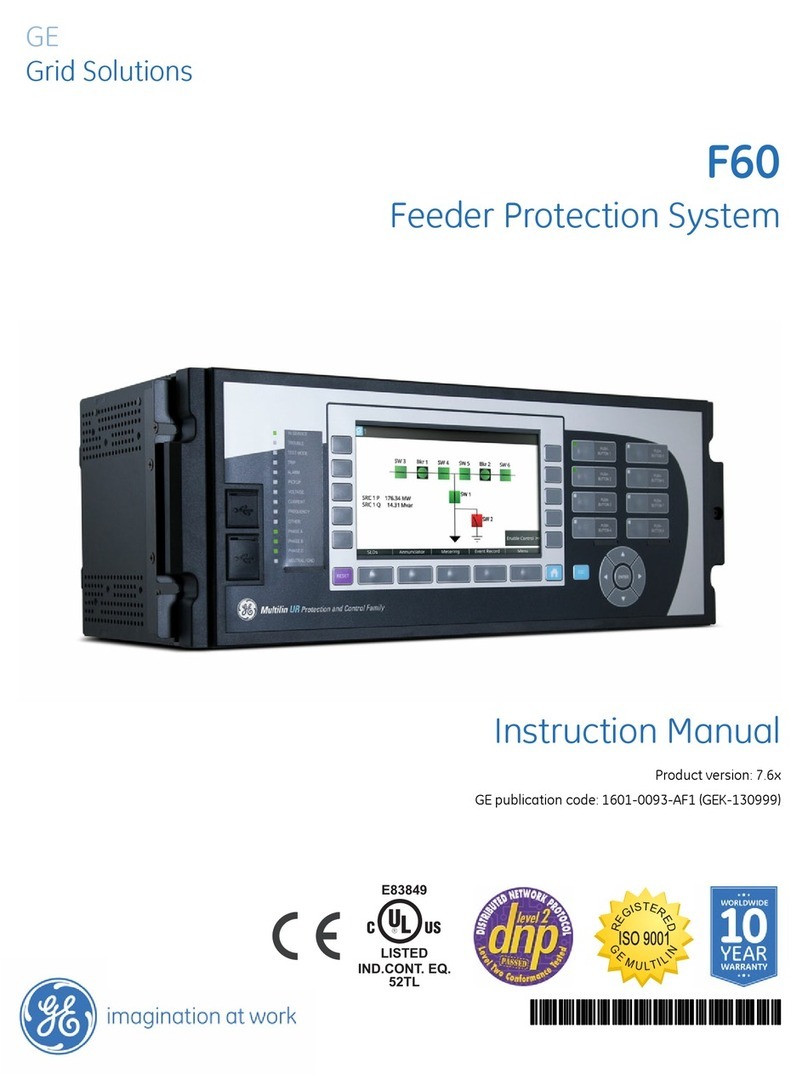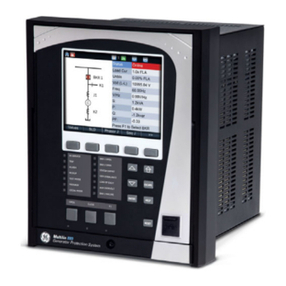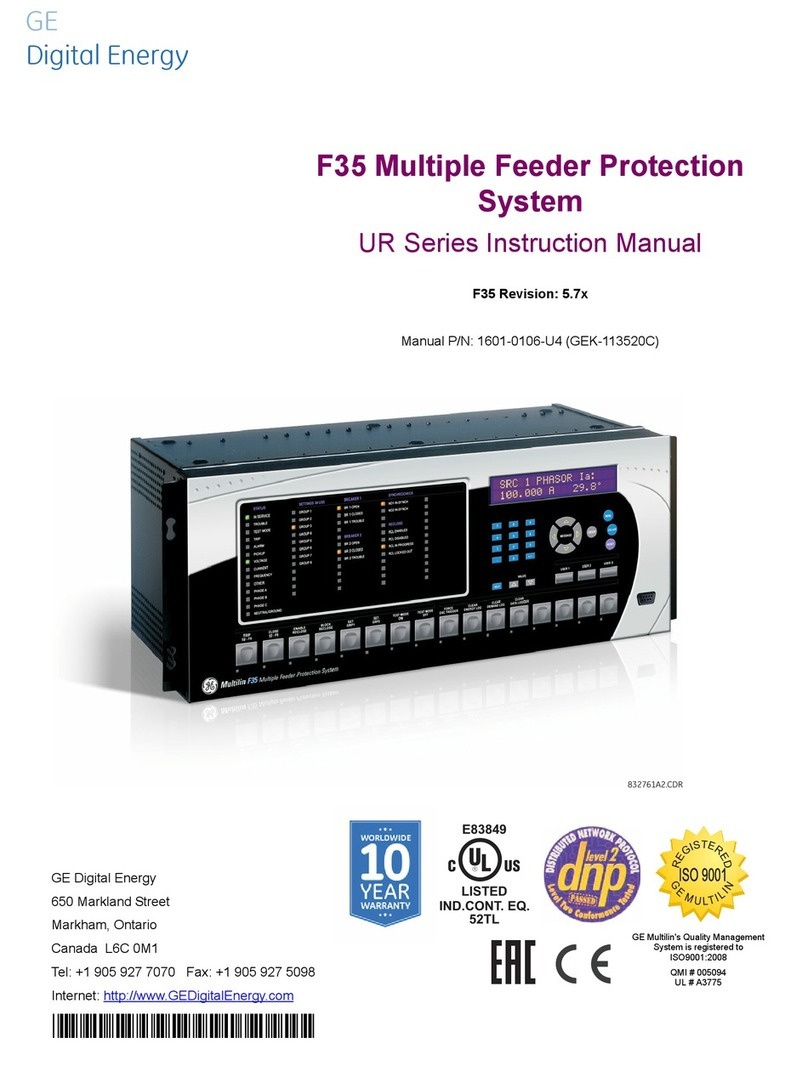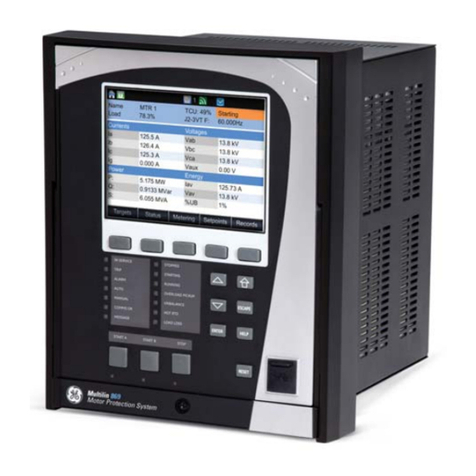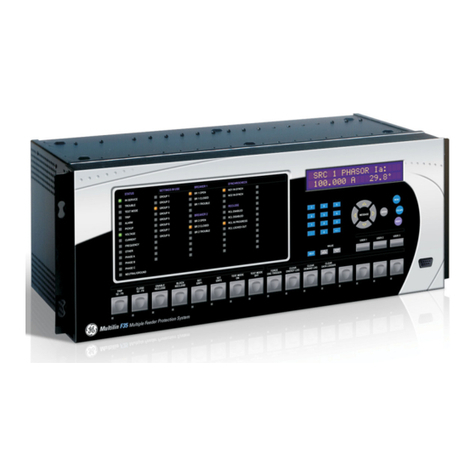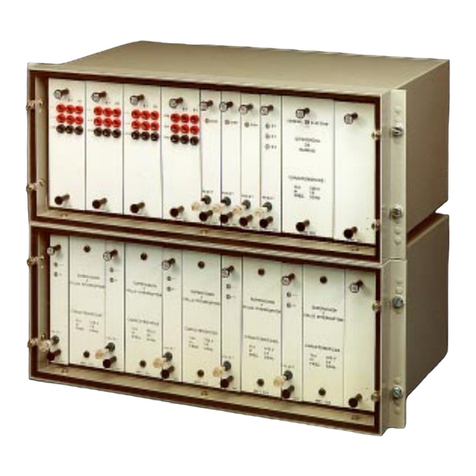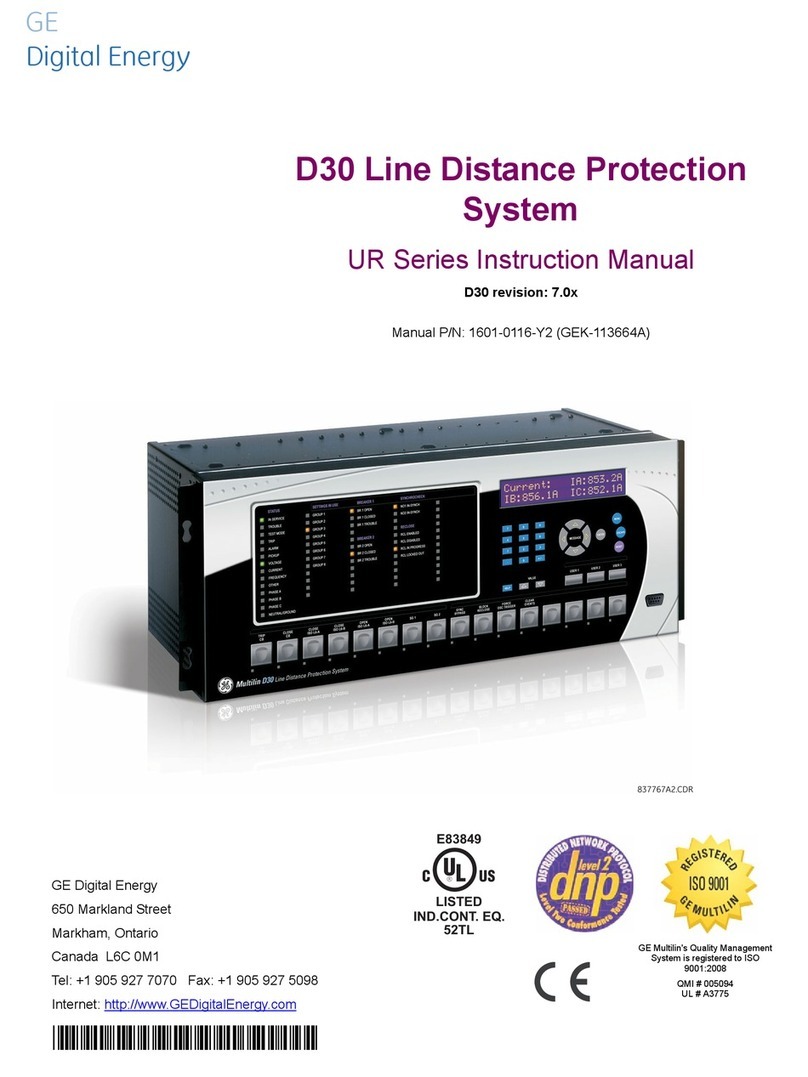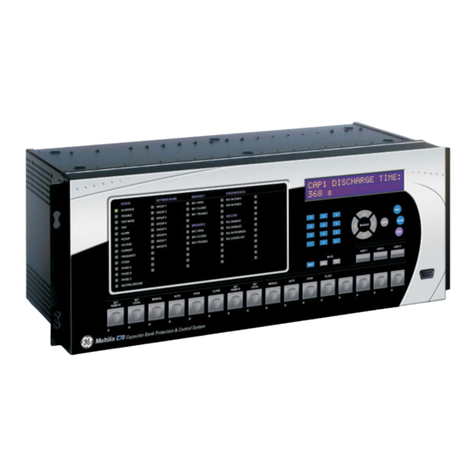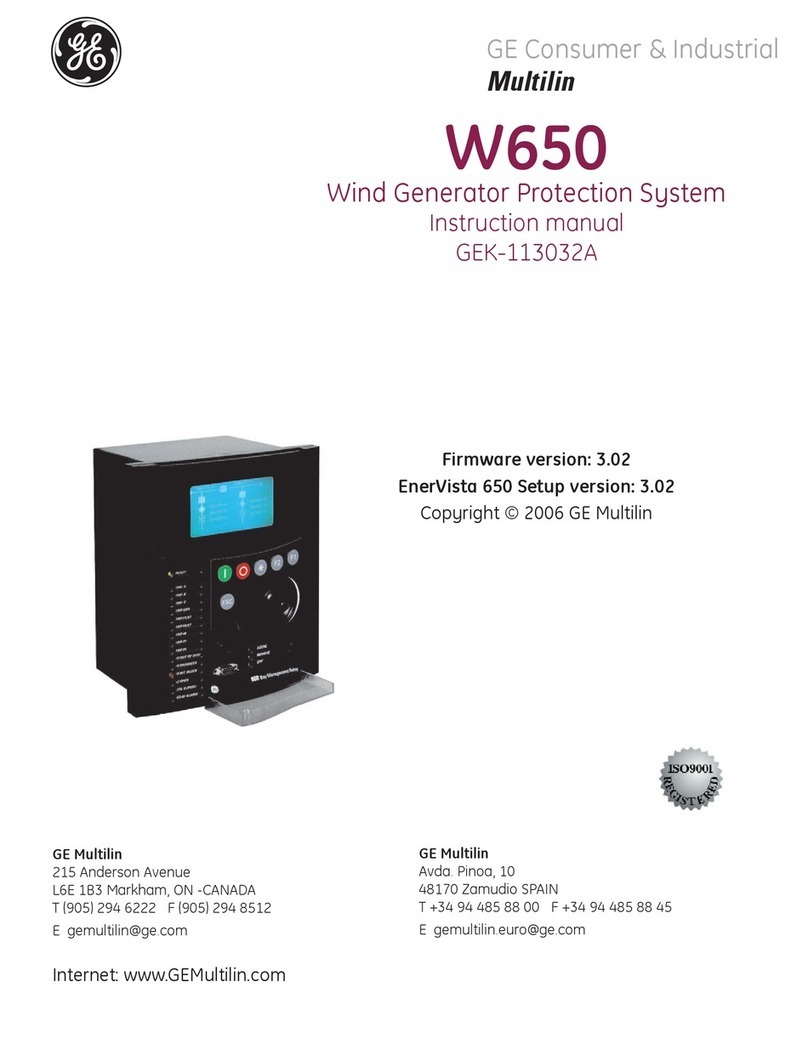
ii 350 FEEDER PROTECTION SYSTEM – COMMUNICATIONS GUIDE
DNP general................................................................................................................................3 - 24
IEC60870-5-104 protocol...............................................................................................3 - 25
IEC 60870-5-104 interoperability .....................................................................................3 - 25
IEC 60870-5-104 protocol settings..................................................................................3 - 33
IEC 60870-5-104 point lists .................................................................................................3 - 34
Summary of Ethernet client connections...............................................................3 - 35
4. SR3 IEC61850
GOOSE
Simplified SR3 IEC61850 GOOSE configuration...................................................4 - 1
SR3 GOOSE capabilities......................................................................................................... 4 - 2
Setting up the SR3 GOOSE Configurator.......................................................................4 - 3
Simplified SR3 IEC61850 GOOSE messaging........................................................4 - 5
Connection..................................................................................................................................4 - 5
Configuration.............................................................................................................................4 - 6
SR3 GOOSE configuration via the IEC 61850 configurator ............................4 - 18
Introduction to the SR3 IEC61850 Device Configurator .......................................4 - 18
SR3 GOOSE configuration - Lab ........................................................................................4 - 22
Configuration lab steps........................................................................................................4 - 24
SR3 IEC 61850 GOOSE details......................................................................................4 - 36
EnerVista SR3 Setup software structure ....................................................................... 4 - 37
GOOSE transmission...............................................................................................................4 - 39
GOOSE Rx.....................................................................................................................................4 - 41
GOOSE Rx status ......................................................................................................................4 - 41
GOOSE Rx headers ..................................................................................................................4 - 43
GOOSE receive dataset structure..................................................................................... 4 - 44
GOOSE remote inputs ............................................................................................................ 4 - 45
IEC 61850 Logical Nodes................................................................................................4 - 47
System logical nodes (LN Group: L)..................................................................................4 - 48
Logical Nodes for protection functions (LN Group:P) ..............................................4 - 48
Logical nodes for protection related functions (LN Group: R).............................4 - 55
Logical Nodes for generic references (LN Group: G) ..............................................4 - 56
Logical Nodes for metering and measurement (LN Group: M)...........................4 - 59
Logical Nodes for switchgear (LN Group: X)................................................................4 - 60
IEC 61850 Common Data Class..................................................................................4 - 60
Common data class specifications for status information..................................4 - 60
Common data class specifications for measurand information.......................4 - 63
Common data class specifications for controllable status information........4 - 65
Common data class specifications for description information........................4 - 67
5. OPC–UA
COMMUNICATION
STANDARD
Definitions and Acronyms .............................................................................................5 - 1
OPC–UA Architecture.......................................................................................................5 - 1
OPC–UA Settings................................................................................................................5 - 2
OPC–UA Server Configuration Data..........................................................................5 - 2
OPC–UA Point Lists............................................................................................................5 - 2
6. USB INTERFACE MODBUS Protocol..............................................................................................................6 - 1
Data Frame Format and Data Rate ................................................................................6 - 1
Data Packet Format................................................................................................................6 - 1
Error Checking...........................................................................................................................6 - 2
CRC-16 Algorithm ....................................................................................................................6 - 2
Timing............................................................................................................................................6 - 3
350 supported functions ......................................................................................................6 - 3






